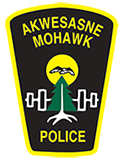Bicycle safety
A bicycle is a vehicle. The Highway Traffic Act defines a vehicle as "anything drawn, propelled or driven by any type of power including muscular power"
Helmets
All cyclists under the age of eighteen years are required by law to wear a helmet while riding or operating a bicycle, and the chinstrap of the helmet must be securely fastened under the chin. (According to the Highway Traffic Act, 104 2.1)
The Highway Traffic Act of Ontario states:
218 (1) A police officer who finds any person contravening this Act or any municipal by-law regulating traffic while in charge of a bicycle may require that person to stop and to provide identification of himself or herself
(2) Every person who is required to stop, by a police officer acting under subsection (1), shall stop and identify himself or herself to the police officer
(3) For the purposes of this section, giving one's correct name and address is sufficient identification
(4) A police officer may arrest without warrant any person who does not comply with subsection (2)
Injury prevention:
- Be a responsible cyclist
- Wear a Helmet
- Night riders should have a white light to the front and a red light or reflector to the rear
- Dress brightly to be seen
- When turning at intersections, be careful; most collisions occur at intersections
- Ride about 1 meter from the curb in a straight line; look well ahead and avoid hazards such as potholes, sewer grates and debris
- Shoulder check and signal before turning or changing lanes
Crime prevention
- Register your bike at your local police station, or on-line
- Always lock your bicycle when not in use
- Lock your bicycle by placing a chain or cable through both wheels and the frame and attach around a stationary object
- If your bike is stolen, report the loss to the police immediately
Akwesasne Mohawk Police Service
PO Box 90, Akwesasne,
Quebec H0M 1A0
Emergencies: 613-575-2000
Non-emerg.: 613-575-2340
